Photos: Live Science Reporter Ages 50 Years with R70i Exoskeleton
Eye see you
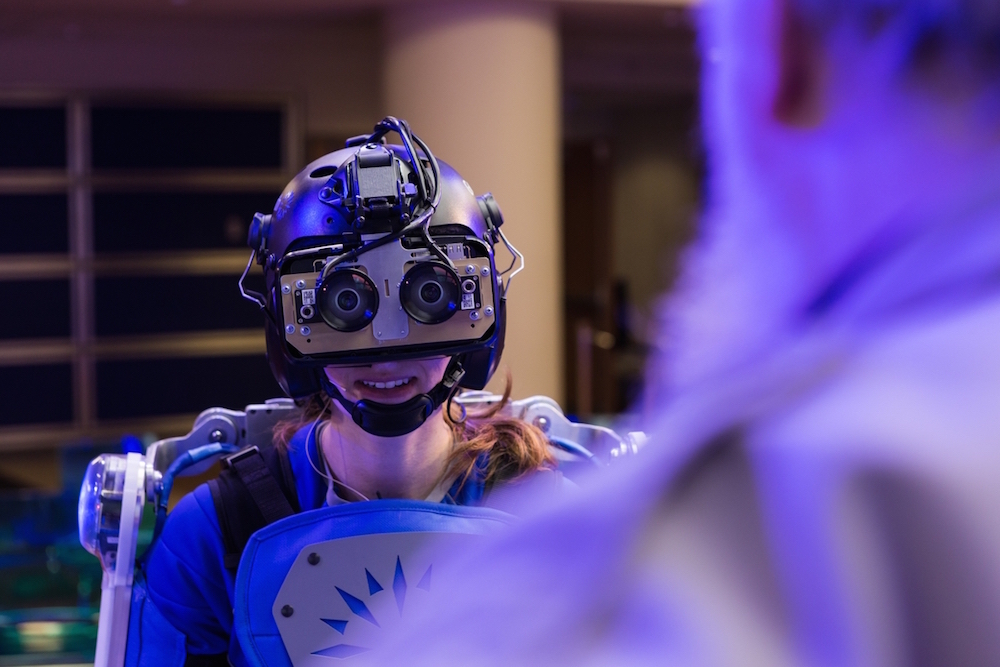
The R70i aging suit made me feel like I had aged about 50 years in 5 seconds. The 40-lb. (18 kilograms) exoskeleton messed with my vision and hearing, and restricted my movement. It wasn't exactly a joyride, but I can say this age-simulation suit increased my empathy for the elderly, and made me think more about the challenges of old age. [Read the Full Story About the R70i Aging Suit]
Ready to go
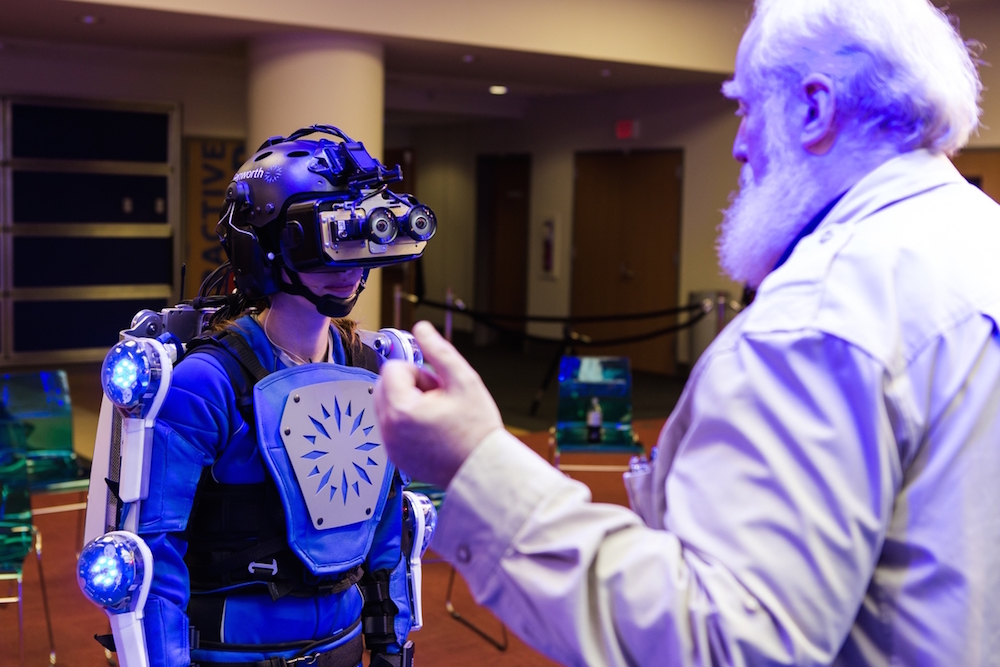
It's hard to walk in the R70i suit, and I didn't get far before I met Bran Ferren, who gave me a rundown of what was about to happen to me. Ferren is the co-founder and chief creative officer of Applied Minds, the company that created the suit.
Look this way

The R70i is equipped with a special helmet that covers the eyes and ears. This allows the control room to distort your vision (hello glaucoma, floaters and cataracts) and hearing.
Eye see you

R70i gave me a number of visual problems, including age-related macular degeneration, an incurable condition that obscures the central visual field. I couldn't see anything directly in front of me. Only the periphery looked clear, and I found it difficult to make my way around by looking at the edges of my vision.
The exoskeleton
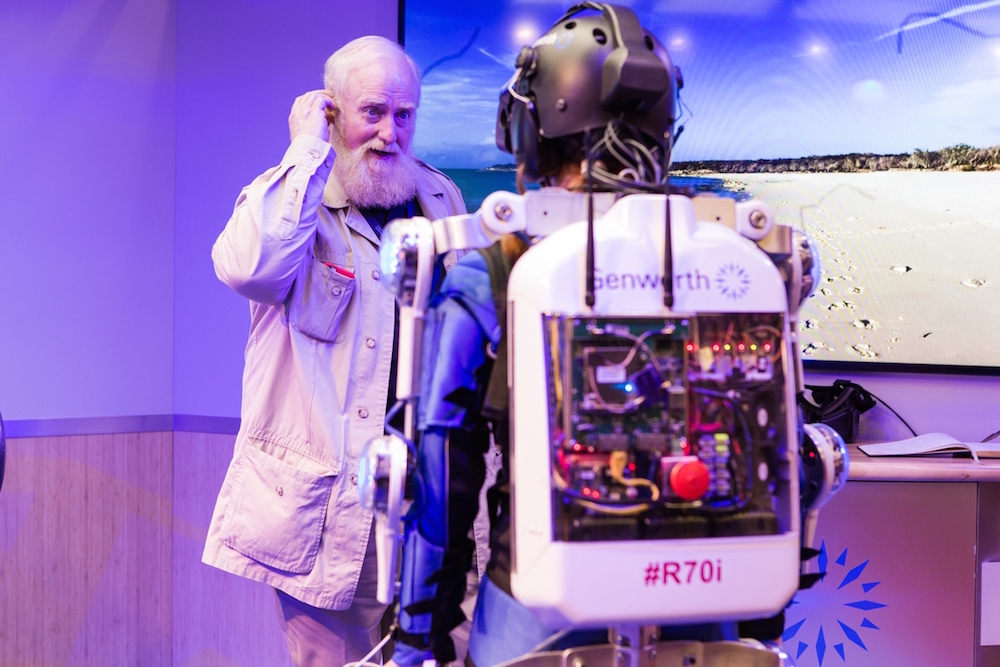
The suit has a backpack filled with lithium-ion phosphate batteries and a cooling system that helps the system run.
Ringing ears

Ferren temporarily gave me tinnitus, that high-pitched whine that constantly rings in some people's ears. He used to work with musicians, and subsequently listened to one too many loud concerts. Those earsplitting shows damaged Ferren's ears, and now he has tinnitus all the time.
Climbing a rope
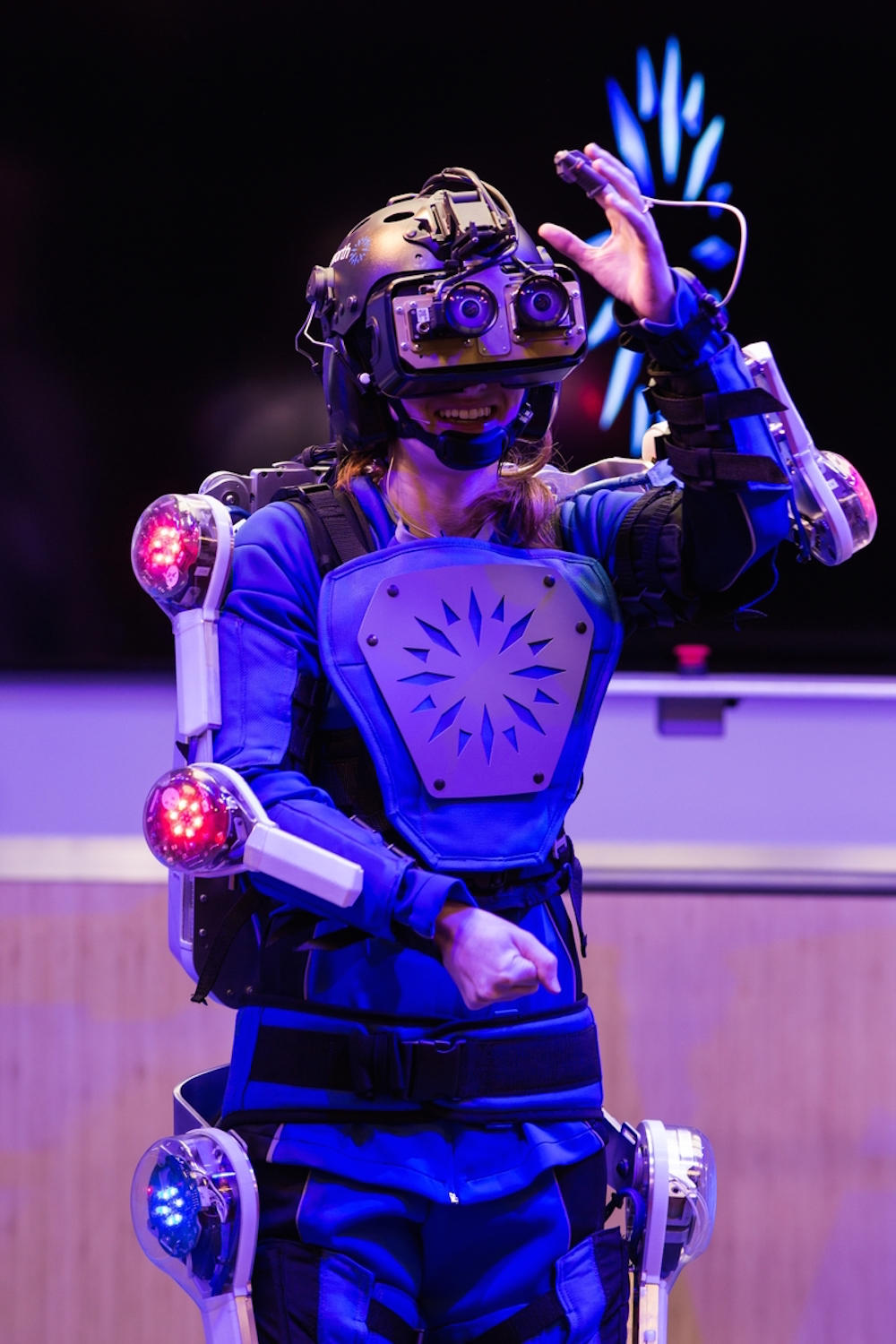
See the red lights on my shoulders and elbows? The red lights indicate that the control room has increased the resistance in those joints, while the blue lights (on my legs) show a normal amount of resistance.
Get the world’s most fascinating discoveries delivered straight to your inbox.
Ferren asked me to pretend like I was climbing a rope swing with my hands. It was difficult and meant to show what it's like to live with a movement-restricting condition, such as arthritis.
Beach stroll
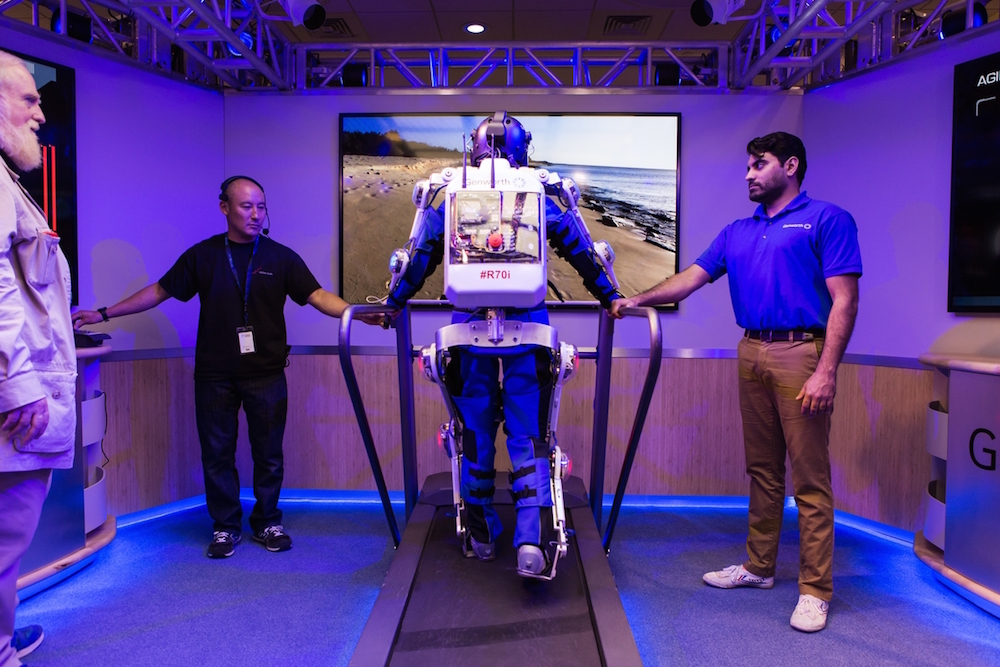
I went for a lovely walk on the Jersey Shore, at least in virtual reality. The control room upped the resistance on both of my legs. This restricted and slowed my movement (turning a brisk walk into a shuffle), increased my heart rate because I was working harder and made me clutch the treadmill's handlebars for support.
Bad hip
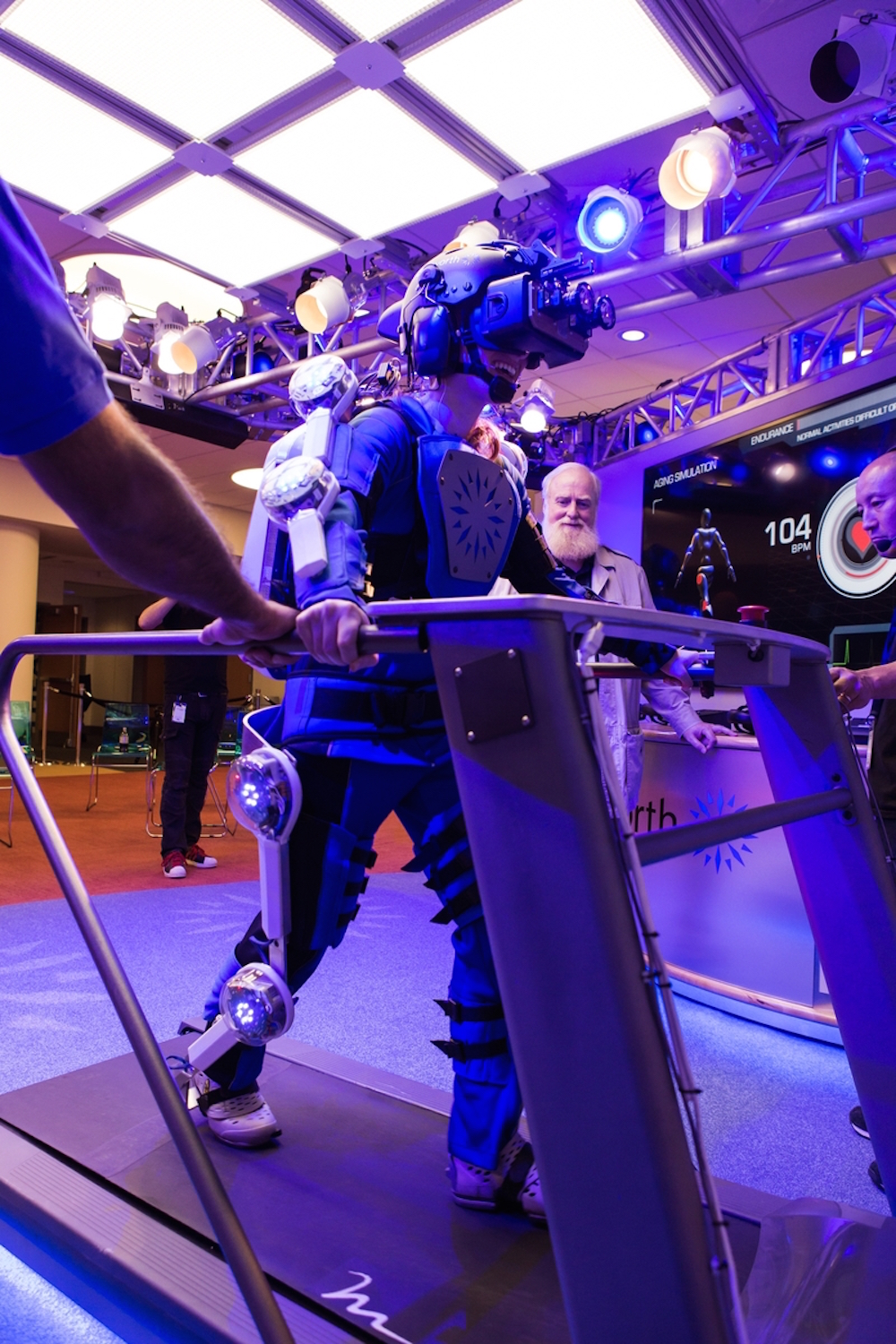
I have blue lights on my right leg, and red lights (indicating resistance) on my left leg. This mismatch threw me off balance, and I had to hold onto the handlebars even more for support. It really slowed me down.
Next time you're walking with someone who has a bad hip, take care to walk slowly with him or her.
One at a time

I experienced each of these maladies one at a time. But many older people have multiple conditions, meaning an older person might have to simultaneously deal with a bad hip and cataracts, or tinnitus and macular degeneration.
Wearing the suit was fun, but I enjoyed taking it off and being able to move around without worrying about my balance, vision or hearing. If anything, this made me think about what conditions I might develop in the future, and how I could take care of myself so I don't get some of the preventable ones, such as tinnitus.
Goodbye, goggles

The R70i suit could encourage compassion and empathy among doctors and caregivers who don't quite understand what their patients are going through. It could also promote discussion among children and their aging parents.
Follow Laura Geggel on Twitter @LauraGeggel. Follow Live Science @livescience, Facebook & Google+.

Laura is the managing editor at Live Science. She also runs the archaeology section and the Life's Little Mysteries series. Her work has appeared in The New York Times, Scholastic, Popular Science and Spectrum, a site on autism research. She has won multiple awards from the Society of Professional Journalists and the Washington Newspaper Publishers Association for her reporting at a weekly newspaper near Seattle. Laura holds a bachelor's degree in English literature and psychology from Washington University in St. Louis and a master's degree in science writing from NYU.


